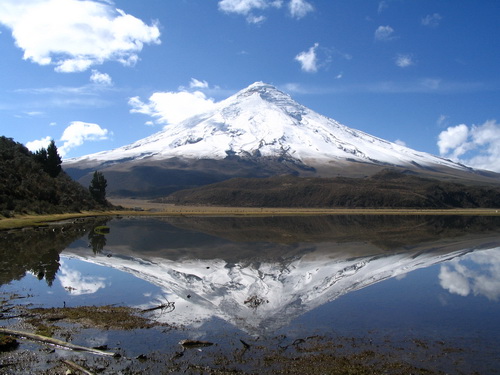Ecuador is one of the most interesting countries on the planet. The incredible diversity of nature, cultures, geography, foods, activities, holiday destinations, people and languages makes this tiny country straddled either side of latitude zero stand out in South America. You might think I’m being biased just because I live here, but I have traveled in, lived in or visited 46 countries over the last 30+ years, and Ecuador is the only country that has ever inspired me to build a house and stick around for a while.
When I began thinking about some of the great things about Ecuador that I’d like to share with people who are thinking about visiting, I found that many of my friends and acquaintances feel the same way about the same things. Therefore, in the spirit of fairness, before I sat down to write this ten-part series, I asked everyone I know who lives now or has lived or traveled in Ecuador this one simple question:
“What is/was the best thing about your experience of Ecuador?” This post, and the following nine posts will be all about what they said.
The Jungles and Forests
In a country that is made up of half rainforest, whether it’s the lush cloud forests high in the Andean Sierra with bird sanctuaries and butterfly farms, the verdant tropical rainforests fringing the Pacific coast filled with howler monkeys, sloth and Pecari tajacu, the wild jungles of the Amazon with the richest variety of flora and fauna on earth, or the moist highlands of the volcanic Galapagos Islands with its giant tortoises, the diversity of landscapes and ecosystems, and wildlife is equal to none.
With 3500 species of orchids, 1600 species of birds, and 415 amphibian species, not to mention mammals, reptiles, insects and marine creatures such as the unique Amazonian pink river dolphins, there is no shortage of fascinating wildlife and countless species of exuberant vegetation to observe in the magical wildernesses of Ecuador. In every corner of the country there is something fascinating to explore and discover, from strange pink caterpillars that will give you an electric shock. gigantic boa-constrictors capable of swallowing a grown man whole, healing shamans who will take you on a natural psychedelic journey to your inner-self, and traditional indigenous tribes who are the fiercest warriors around, as they shrink heads and eat delicious grubs right out of the ground. Critters you’ve never even imagined abound in Ecuador. Flowers and plants that are beyond imagination thrive in the jungles and forests.
Despite its remoteness, the Amazon is alive with people. plants, creatures and adventures just waiting to be enjoyed. Historically, indigenous communities of the Siona Secoya, Cofan, Huaorani, Quichua, Shuar and Ashuar have been able to maintain a productive subsistence within the existing ecosystems of vast Amazonian forest preserve, estimated to cover around 12 million hectares. The Amazon ecosystem, particularly its tropical jungles, is considered one of the richest and most complex communities of plant and animal life in the world.
Friends from all over the world, and from all walks of life, we all agree unanimously that the forests and jungles of Ecuador, and the vast range of indigenous peoples and their cultures and traditions, and the amazing wildlife, incredible nature, countless activities, wild and tame adventures and wonderful education they have to offer a visitor to the country, are definitely not to be missed if you are thinking of coming to Ecuador.
Footprints can take you into the highlands, rainforests and jungles of Ecuador and show you a wonder-world of nature and eco-fun.





